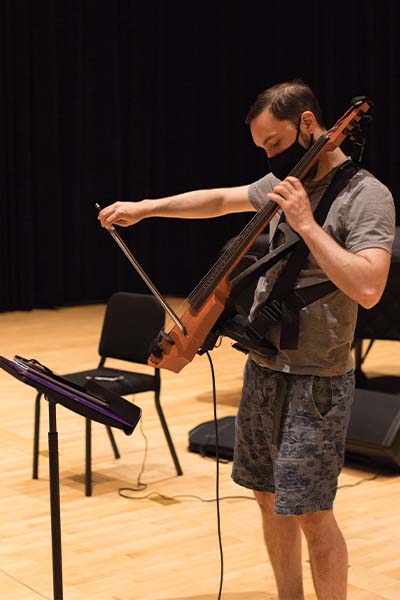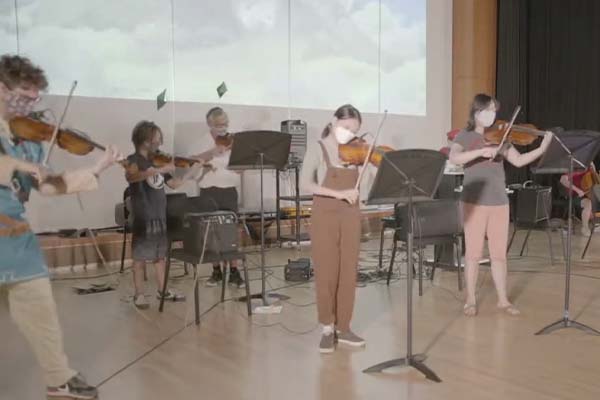GMI Artist In Residence: Greg Byers

A Chance to Play Modern Music
As a longtime video gamer, cello teaching artist Greg Byers wanted to explore modern styles of their music for his Artist-in-Residence project, a video game music orchestra.
“We talked about narrowing the range, finding a topic that would engage students, and we thought video game music would be great for that,” he notes.
He picked music from video games both familiar—like the theme to Final Fantasy 7–and a bit obscure.
He also points out that gaming itself has changed a lot since his childhood. “The ubiquity of games isn’t limited. It’s much more widely common for anybody. If you have a phone, you can play a game.”
A Highly Technical Undertaking
Byers’ ensemble was comprised of nine students ranging in age from 10 to 18 years old. During their 7 weeks of working together, he worked with each individual student to make sure the music worked for them.
“If a part was too hard, I worked with the student to figure out how we can simplify it. That’s the beauty of the situation, it allows me to incorporate any skill level and how to be more about having fun making music after a year of lockdown instead of just being paranoid about playing all the right notes.”
Byers partnered with Fishman, a music amplification company specializing in string amplification, to provide pickups so that each student could have their own amplification device.
“I wanted this to be the experience of a modern concert. For one song, I used a kickdrum with a metronome sound, and it gives the song way more oomph to have some percussion going on as opposed to a bunch of string players playing on their own. It’s important that it feels like a pop concert they might go to.”
For their final live performance, every student had their own monitoring.

“They had their own speaker so they could hear their own playing, which I think is crucial when you’re doing this. If it’s amplified, they need to be able to hear themselves,” he explains. A line was placed from all their monitors into a mixing board, and the mixing board transmitted to a livestream on YouTube.
“And in the room, you could hear all the speakers from the students because they were facing the audience. My microphone and cello and tracks went into one unit called a Voice Live 3, that went to a PA in the room, the PA in the room went to the same mixer as the other monitors, and that once again went to the livestream. I’m really proud of that.”
A Dream Ensemble
At the heart of Byers’ project was the idea of incorporating elements typically not taught to string students: the teaching of modern styles, improvisation, and the use of music technology.
“I wanted to show kids that string players can do this stuff. I just wanted to create the group I wish I had had. My hope is to continue doing ensembles like this.”
